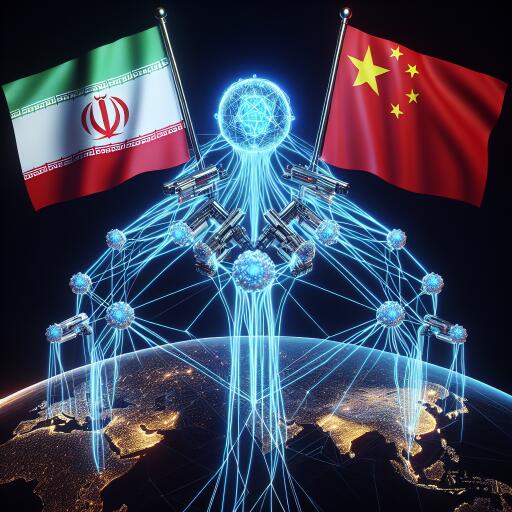Emerging Cyber Threats: The Rise of AI Weaponization by Global Adversaries
In a revealing update this Wednesday, Microsoft announced a concerning trend: adversaries, notably from Iran, North Korea, with additional activities traced back to Russia and China, have been detected exploiting or attempting to exploit generative artificial intelligence (AI) for cyber operations. This disclosure illuminates the growing complexity of cyber threats as geopolitical rivals increasingly turn to technology to enhance their offensive capabilities.
In collaboration with its partner OpenAI, Microsoft has identified these efforts involving large-language models as part of an emerging and evolving cyber threat landscape. Interestingly, the techniques observed were not considered to be groundbreaking, suggesting that the use of AI in such contexts is still in its nascent stages, yet significant enough to warrant public attention.
The use of AI and machine learning has long been a battleground in cybersecurity, with defensive applications being countered by the adoption of these technologies for malicious purposes. The development and integration of large-language models, like those developed by OpenAI, notably ChatGPT, have propelled the sophistication of potential cyber threats to new heights.
Microsoft’s proactive stance against these threats, underscored by its substantial investment in OpenAI, reflects a growing awareness of the potential risks posed by generative AI technologies. The recent findings come at a time when the global community is grappling with issues like malicious social engineering, advanced deepfakes, and voice cloning—technologies that could significantly undermine democratic processes, particularly during election seasons.
Instances of misuse shed light on the diverse applications of large-language models by adversaries. For example, the North Korean cyberespionage outfit, Kimsuky, has leveraged such models for researching foreign think tanks and concocting spear-phishing campaigns. Meanwhile, Iran’s Revolutionary Guard has turned to these technologies for crafting phishing emails and conducting social engineering. Not to be outdone, entities like the Russian GRU unit, known as Fancy Bear, and Chinese groups including Aquatic Panda and Maverick Panda, have explored using AI to bolster their technical operations and research capabilities.
On the other side of this technological battleground, OpenAI has addressed these uses of its technologies, noting that the observed techniques align with prior assessments regarding the limited capabilities of its GPT-4 model chatbot for malicious cybersecurity activities. However, the potential for AI’s misuse in cyber operations remains a stark concern for the tech community.
The issue transcends technology, touching upon national and global security concerns. Jen Easterly, the director of the U.S. Cybersecurity and Infrastructure Security Agency, has voiced particular concerns about the dual threats posed by China and AI technology. The emphasis on securing AI development against exploitation underscores the crucial need for vigilance and innovation in cybersecurity practices.
As the digital and geopolitical landscapes continue to evolve, the intersection between AI and cyber threats prompts a critical reassessment of our defensive frameworks. Microsoft’s exposure of these early-stage, yet incrementally advancing threats, serves as a timely reminder of the persistent and evolving nature of cyber risks in an increasingly interconnected world.
The ongoing battle in cyberspace against the weaponization of AI by adversaries underscores the urgency for collaborative efforts in technology development, cybersecurity strategy, and international policy. Coupled with the need for ethical guidelines and robust security measures, the race to outmaneuver malicious actors in the AI arena continues to be a dynamic and challenging frontier.









